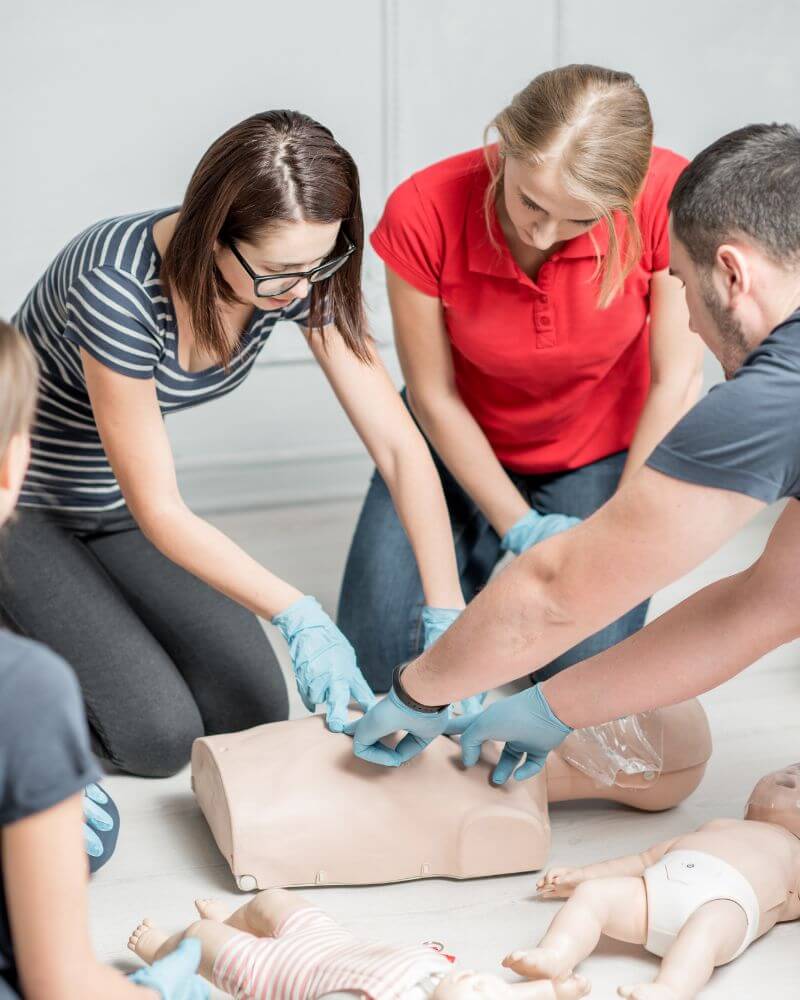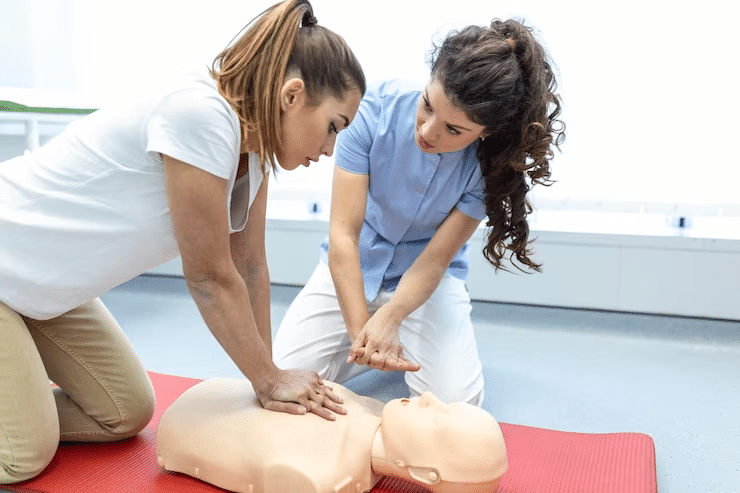Introduction
First aid training is an invaluable capability that can conserve lives, providing immediate support to hurt or ill people. Whether you're a parent, teacher, train, or simply a person who wants to be planned for emergencies, recognizing the different kinds of first aid programs offered is important. These programs vary in web content, Adelaide First Aid Course Near Me period, and certification degrees, accommodating different needs and environments.
In this thorough overview, we'll explore the subtleties of first aid courses, examining their significance, the breadth of topics covered, and just how to choose the right training course for you. With an emphasis on practical abilities like mouth-to-mouth resuscitation (cardiopulmonary resuscitation), our emphasis will aid you comprehend just how these courses equip you with essential devices for emergency situations.
Understanding the Various Types of Emergency Treatment Rushes Available
What is an Emergency treatment Course?
A first help course is made to instruct people exactly how to supply immediate care in emergency situations. The educational program typically covers a large variety of subjects consisting of injury treatment, choking relief methods, and carrying out CPR.

Objectives of First Aid Courses
- Immediate Care: Outfit participants with abilities to handle emergency situations till expert aid arrives. Prevention Education: Show people just how to prevent accidents and wellness crises. Confidence Building: Foster confidence in one's capability to act emphatically in emergencies.
The Value of mouth-to-mouth resuscitation Training
What is CPR?
CPR means cardiopulmonary resuscitation. It's a lifesaving method utilized when somebody's breathing or heart beat has quit. Knowing CPR can dramatically boost survival rates for heart attack victims.
Why Take a CPR Course?
Taking a CPR course not just prepares you for emergency situations however likewise boosts your ability to react efficiently under pressure.
Key Elements Covered in mouth-to-mouth resuscitation Courses:
- Chest compressions technique Rescue breaths Use of automated exterior defibrillators (AEDs)
Types of Emergency treatment Surges Available
Basic First Aid Course
A basic emergency treatment course normally covers basic abilities required for supplying care in emergencies.
Common Subjects:
Wound management Bandaging techniques Recognizing indicators of shockAdvanced First Aid Course
This program digs much deeper into more complex situations such as taking care of multiple casualties or specific clinical conditions.
Focus Areas:
- Advanced injury care Emergency childbirth procedures Managing persistent health problems in emergencies
Specialized Emergency treatment Courses
Different occupations require tailored first aid training. Below are some specialized choices:
Pediatric Emergency treatment Course
Designed for those working with youngsters-- parents, educators, and caretakers-- this training course focuses on age-specific considerations.
Highlights:
- Choking alleviation for infants Common childhood years ailments Behavioral problems throughout emergencies
Workplace Emergency treatment Course
Tailored especially for work environment atmospheres, this training course shows staff members how to deal with cases usual in particular settings like manufacturing facilities or offices.
Key Attributes:
- Risk assessment techniques Emergency emptying procedures Handling chemical spills or injuries
Online vs. In-Person Emergency treatment Courses
With developments in modern technology, many companies currently provide online courses along with conventional in-person sessions.
Advantages of Online Courses:
Flexibility: Discover at your own pace. Accessibility: Go to from anywhere with an internet connection. Cost-effective: Often less expensive than classroom settings.Disadvantages of Online Courses:
Limited hands-on practice. Less interaction with instructors. Potentially lower interaction levels.How to Choose the Right Emergency Treatment Course
Choosing the ideal first help and CPR course can be difficult offered the range available today.

Considerations When Picking a Training course:
Your Needs: Are you preparing for home care or work environment safety? Duration: How much time can you commit? Certification Requirements: Do you require accreditation for your job?Finding Accredited Emergency treatment Courses
When choosing a first aid course, ensure it's certified by acknowledged companies such as the American Heart Organization (AHA) or Red Cross.
Accreditations Issue Since They Make certain:
- Quality training standards Recognition by companies and institutions Updated educational program mirroring present guidelines
First Help Qualification Process
Steps to Acquire Your Emergency Treatment Certificate
Once you've completed your chosen first aid course, getting your certificate generally needs a number of steps:
Complete the training program successfully. Pass any kind of required exams or assessments. Receive your certification via email or postal service.Validity Duration of Emergency treatment Certificates
Most first aid certificates stay valid for 2 to 3 years depending upon the releasing body; hence it's necessary to renew them routinely with refresher course courses.
The Effect of Effective Emergency Treatment Training
Real-Life Circumstances Where Emergency treatment Made a Difference
Numerous accounts exist where prompt emergency treatment intervention saved lives-- from cardiovascular disease instances at showing off occasions to choking events at home dinners.
Case Research study Example: Sudden Heart Arrest
In one renowned case during a local marathon occasion, trained volunteers carried out CPR effectively causing successful resuscitation prior to paramedics arrived.
Benefits Beyond Immediate Care
Learning emergency treatment additionally brings about mental benefits such as boosted self-confidence and readiness which translates into improved area well-being overall.
Frequently Asked Questions (FAQs)
1) What is included in a normal first aid course?
A standard first aid course includes basic methods like wound therapy, recognizing signs and symptoms of distress (like shock), and performing CPR when necessary.
2) How long does it take to finish a first aid course?
Most standard training courses last in between 4-- 8 hours while advanced training courses may cross several days relying on content depth and complexity.
3) Can I discover emergency treatment online?
Yes! Several companies offer thorough on-line training programs; nonetheless useful hands-on experience is urged as well whenever possible.
4) Is certification called for by law?
While not mandated by law universally, specific occupations do need accreditations such as educating staff or health care employees; constantly check neighborhood regulations!
5) Just how often must I renew my first aid certification?
Typically every two years; however this can depend upon the company providing your first training-- inspect their guidelines!
6) What happens if I require unique accommodations during training?
Most certified programs permit adaptations; connect straight with the training provider concerning certain requirements before enrollment!

Conclusion
Understanding the different sorts of first aid training courses readily available empowers individuals not just with knowledge yet also fosters a setting where people feel safe recognizing they can respond efficiently throughout emergencies. By spending time into learning these essential skills-- whether with standard approaches or modern-day online systems-- you're taking positive actions toward making your area more secure for everyone involved!
Whether you want obtaining your first help certificate, checking out specific programs like pediatric treatment courses or simply wanting to review your skills via refresher courses-- the alternatives are plentiful! So why wait? Study discovering these possibilities today!